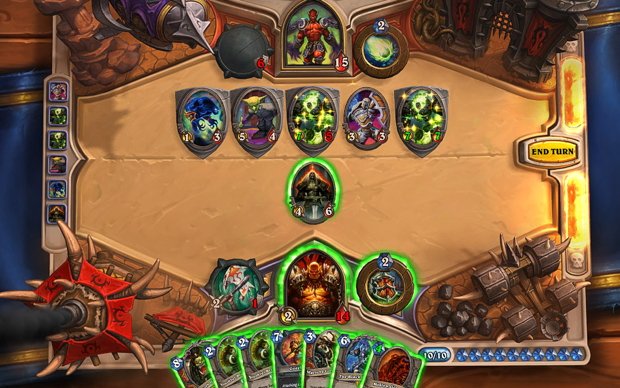Hearthstone: Heroes of Warcraft Guide
Arena Tips

Preparing for the Arena
Now we’re in the big leagues and all of those neat tricks you’ve been practising don’t count for squat. The random aspect of the cards available after picking your hero means that the limit of 2 of the same type of card per deck doesn’t exist anymore. It also means that the synergistic combos you’ve been painstakingly working on are also out of the window, have ricocheted off the lawn, bounced over the neighbor's fence and been brutally savaged by Cuddles the rabid Rottweiler.
You’ll need to rely on your general knowledge to select versatile cards that can be effective in various scenarios. Your opponent will be in the same boat so swot up on serviceable neutral cards that can fill out the deck of any class and class specific gems that will help you gain an advantage on the board.
Drafting a Deck
Decide on your approach and build a deck around the play style you’ve committed to. For example, if you want to go all out in the early game (Aggressive), your mana curve (how your mana is distributed over the cards you’ve chosen) will peak at the 2 and 3 drops, which in real terms translates as building a deck with lower cost cards that will allow you to put on the pressure from the outset with the aim of finishing your opponent as quickly as possible. You may have noticed that certain heroes will be better suited to particular play styles (Aggressive, Control etc) so factor this into your decision.
Don’t get stingy with the minions. Ultimately it’s these little chaps that will turn the tide of battle so make sure you have a plentiful supply of fleshy fodder to trot out onto the board to protect you. Besides minions, other cards to look out for are Spell Damage cards, cards that allow you to draw more cards or summon minions and the various spells and battlecries that will enable you to attack enemy minions and heroes directly.
Mana curves and their complimenting classes
As you get to grips with Hearthstone, you’ll develop your own style of play and your own preferences of class, but this is a loose guide to the main play styles and the classes which are best suited to them.
Aggro
This is an early game mana curve that will feature a lot of 1-2-3 drops with the aim of mopping up what’s left of your opponent during the early to mid-game. The Warrior, Rogue, Shaman, Hunter and Mage work well with this play style. The higher value drops should be focused on removal as opposed to mana heavy minions.
Balanced
This is very much a mid-game mana curve and as such can be utilised by any class. The deck will peak at 3-4-5 drops and pretty much all of the classes have solid cards around this mana value.
Control
The late game mana curve is for those with patience and classes that have cards that will set you up in the early game and allow you to build on them to comfortably take you into the late-game. Controlling the board isn’t something that can be rushed so don’t just stack your deck with high cost mana drops and omit the 2-3-4 drop minions and spells that you’ll need to start you off. The Warlock, Priest, Mage and Druid are ideal control decks.
Jump to Section:
- Game Modes
- Heroes / Classes
- Basic Glossary
- Getting Started
- Heroes / Classes Strategies and Recommended Cards:
- Secrets
- Arena Tips
- Basic Decks
Sign up to the GamesRadar+ Newsletter
Weekly digests, tales from the communities you love, and more



